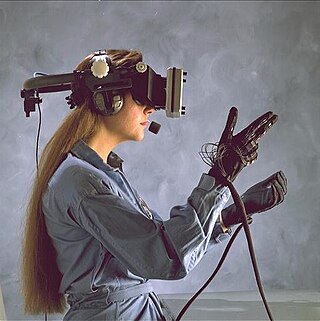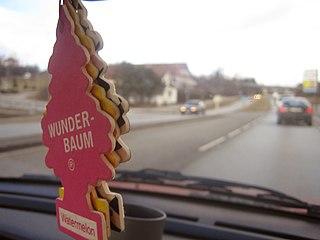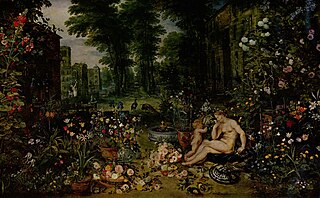Related Research Articles

A camera is an optical instrument used to capture and store images and videos, either digitally via an electronic image sensor, or chemically via a light-sensitive material such as photographic film. As a pivotal technology in the fields of photography and videography, cameras have played a significant role in the progression of visual arts, media, entertainment, surveillance, and scientific research. The invention of the camera dates back to the 19th century and has since evolved with advancements in technology, leading to a vast array of types and models in the 21st century.
NewTek, Inc., is a San Antonio, Texas–based hardware and software company that produces live and post-production video tools and visual imaging software for personal computers. The company was founded in 1985 in Topeka, Kansas, United States, by Tim Jenison and Paul Montgomery. On April 1, 2019, it was announced that NewTek would be acquired by Vizrt.

Haptic technology is technology that can create an experience of touch by applying forces, vibrations, or motions to the user. These technologies can be used to create virtual objects in a computer simulation, to control virtual objects, and to enhance remote control of machines and devices (telerobotics). Haptic devices may incorporate tactile sensors that measure forces exerted by the user on the interface. The word haptic, from the Greek: ἁπτικός (haptikos), means "tactile, pertaining to the sense of touch". Simple haptic devices are common in the form of game controllers, joysticks, and steering wheels.
Visual effects is the process by which imagery is created or manipulated outside the context of a live-action shot in filmmaking and video production. The integration of live-action footage and other live-action footage or CGI elements to create realistic imagery is called VFX.
Smell-O-Vision is a system that released odour during the projection of a film so that the viewer could "smell" what was happening in the movie. Created by Hans Laube, the technique made its only appearance in the 1960 film Scent of Mystery, produced by Mike Todd Jr., son of film producer Mike Todd. The process injected 30 odors into a movie theater's seats when triggered by the film's soundtrack.
Aromachology is the study of the influence of odors on human behavior and to examine the relationship between feelings and emotions. Those who practice aromachology are aromachologists. Aromachologists analyze emotions such as relaxation, exhilaration, sensuality, happiness and well-being brought about by odors stimulating the olfactory pathways in the brain and, in particular, the limbic system. Different wearers are thought to have unique physiological and psychological responses to scents, especially those not manufactured synthetically but based on real scents. The word "aromachology" is derived from "aroma" and "physio-psychology", the latter being the study of aroma. This term was coined in 1989 by what is now the Sense of Smell Institute (SSI), a division of The Fragrance Foundation. The SSI defines aromachology as "a concept based on systematic, scientific data collected under controlled conditions". The term is defined as the scientifically observable influence of smell on emotions and moods. Consumers use aromachology to alleviate time pressures, for relaxation or stimulation and as a component of other activities that generate a feeling of well-being.

A wired glove is an input device for human–computer interaction worn like a glove.

Digital photography uses cameras containing arrays of electronic photodetectors interfaced to an analog-to-digital converter (ADC) to produce images focused by a lens, as opposed to an exposure on photographic film. The digitized image is stored as a computer file ready for further digital processing, viewing, electronic publishing, or digital printing. It is a form of digital imaging based on gathering visible light.

Little Trees are disposable air fresheners shaped like a stylized evergreen tree, marketed for use in motor vehicles, and most commonly seen hanging from rear-view mirrors. They are made of an absorbent material produced in a variety of colors and scents.
The Intel Play product line, developed and jointly marketed by Intel and Mattel, was a product line of consumer "toy" electronic devices. The other toys were the Digital Movie Creator, the Computer Sound Morpher, and the Me2Cam.

An electronic nose is an electronic sensing device intended to detect odors or flavors. The expression "electronic sensing" refers to the capability of reproducing human senses using sensor arrays and pattern recognition systems.
The iSmell is a commercial application of digital scent technology. Personal Scent Synthesizer developed by DigiScents Inc. was a small device that can be connected to a computer through a universal serial bus (USB) port and powered using any ordinary electrical outlet. The appearance of the device is similar to that of a shark’s fin, with many holes lining the “fin” to release the various scents. Using a cartridge similar to a printer’s, it can synthesize and even create new smells from certain combinations of other scents. These newly created odors can be used to closely replicate common natural and man-made odors. The cartridges used also need to be swapped every so often once the scents inside are used up. Once partnered with websites and interactive media, the scents can be activated either automatically once a website is opened or manually. However, the product is no longer on the market and never generated substantial sales. Digiscent had plans for the iSmell to have several versions but did not progress past the prototype stage. The company did not last long and filed for bankruptcy a short time after.
Headspace technology is a technique developed in the 1980s to elucidate the odor compounds present in the air surrounding various objects. Usually the objects of interest are odoriferous objects such as plants, flowers and foods. Similar techniques are also used to analyze the interesting scents of locations and environments such as tea shops and saw mills. After the data is analyzed, the scents can then be recreated by a perfumer.

A time-of-flight camera, also known as time-of-flight sensor, is a range imaging camera system for measuring distances between the camera and the subject for each point of the image based on time-of-flight, the round trip time of an artificial light signal, as provided by a laser or an LED. Laser-based time-of-flight cameras are part of a broader class of scannerless LIDAR, in which the entire scene is captured with each laser pulse, as opposed to point-by-point with a laser beam such as in scanning LIDAR systems. Time-of-flight camera products for civil applications began to emerge around 2000, as the semiconductor processes allowed the production of components fast enough for such devices. The systems cover ranges of a few centimeters up to several kilometers.

An odor or odour is caused by one or more volatilized chemical compounds that are generally found in low concentrations that humans and many animals can perceive via their sense of smell. An odor is also called a "smell" or a "scent", which can refer to either an unpleasant or a pleasant odor.

The sense of smell, or olfaction, is the special sense through which smells are perceived. The sense of smell has many functions, including detecting desirable foods, hazards, and pheromones, and plays a role in taste.

Smelly socks are socks that have acquired a strong odour due to prolonged wearing. Their odour, which is complex and remains the object of study, is a mixture of ammonia, fatty acids, and lactic acid.

Digital scent technology is the engineering discipline dealing with olfactory representation. It is a technology to sense, transmit and receive scent-enabled digital media. The sensing part of this technology works by using olfactometers and electronic noses.
Sensory design aims to establish an overall diagnosis of the sensory perceptions of a product, and define appropriate means to design or redesign it on that basis. It involves an observation of the diverse and varying situations in which a given product or object is used in order to measure the users' overall opinion of the product, its positive and negative aspects in terms of tactility, appearance, sound and so on.
A smelling screen is a type of digital scent technology, unveiled in 2013, that combines a display screen, similar to a television or computer monitor, with an odor emitting device capable of pinpointing the smell to a specific portion of the displayed image. It is believed to be the first device to incorporate smells into a television screen, though certainly not the first to synchronize smell with a displayed image.
References
- ↑ "Wired 7.11: You've Got Smell!". Wired. 2009-01-04. Retrieved 2013-07-02.
- ↑ "32. Digiscents Inc — The 50 Worst Internet Startup Fails of All Time". Complex. 2012-10-18. Retrieved 2013-07-02.
- 1 2 3 4 Wainwright, Oliver (2013-06-28). "Scentography: the camera that records your favourite smells | Art and design | guardian.co.uk". Guardian. Retrieved 2013-07-02.
- 1 2 "Madeleine | Idol Magazine". Idolmag.co.uk. Retrieved 2013-07-02.